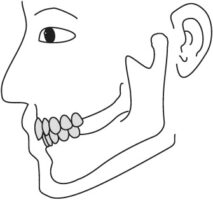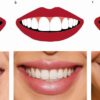- By - Malfaifi
- Posted on
- Posted in Fixed, Prosthesis
Shortened Dental Arch
Limited Treatment Goals - Shortened Dental Arches
Kayser 1994

Preservation of complete dental arches may be technically possible but should be weighed against limited treatment goals
The anterior teeth and premolars are essential for life and therefore deserve the best preventive and restorative care. This is the core of the shortened dental arch concept.
The compulsion to replace every missing tooth may lead to overtreatment, resulting in burdening the periodontal tissues.
Criteria for a healthy occlusion as developed by Ramfjord & Ash and Mohl et al.
• Absence of pathological manifestations
• Mandibular stability
• Satisfactory function (aesthetics, chewing etc.)
• Variability in form and function
• Adaptive capacity to changing situations.
The prime aim of dental care is to maintain a healthy, natural, functional dentition for life.
Principle of restorative treatment
The location of implants in edentulous jaws is an application of the shortened dental arch concept
Oral function in shortened dental arches
Epidemiological studies have shown a lack of correlation between the absence of molars and impaired oral function
A cross-sectional study on 118 subjects with different dental arch lengths revealed that there is sufficient adaptive capacity to ensure acceptable oral function in shortened dental arches when the premolars are present
Without molar support, the chewing ability in terms of chewing comfort is only slightly impaired
As long as premolar support is present, signs and symptoms of craniomandibular dysfunction are unlikely to manifest themselves
The general conclusion, based on clinical observation as well as research findings, is that sufficient and acceptable oral function is guaranteed in most subjects when the anterior teeth and premolars are present.
The shortened dental arch concept
The large discrepancy between professionally assessed need and subjective treatment need, especially among elderly people. This is the main reason that patients often do not wear removable partial dentures to replace molars.
Patients with shortened dental arches treated with fixed reconstructions need less occlusal units than patients treated with free-end removable partial dentures to achieve equal or even better oral function
The occlusion preservation target
The anterior and premolar regions are indispensable throughout life and should always get the best quality care.
A shortened dental arch should only be extended prosthetically when it is causing relevant problems, such as unacceptable appearance, chewing problems etc.
Conclusion
Oral functional demands vary from individual toindividual and change with time; they may be satisfied with less than 14 occluding pairs of teeth.
Traditional morphologically and mechanically based concepts for occlusal treatment are static by nature; they should be replaced by dynamic, problem-solving approaches.
Limited treatment goals increase the range of indications to apply (less complicated) fixed prosthetic appliances in oral reconstruction.


